QuestionHello!
I have always wanted to work in the veterinary, specifically as a veterinary technician. However after I heard that they do not make a lot of money I decided that I would finish getting a nursing degree and work as a RN, while also working as a para-veterinary worker part time. I heard that vet tech school can be quite expensive so I am considering getting a veterinary assistant certification instead.
My question is in regards to some things that veterinary assistants can do. For example, the reason why I wanted to become a vet tech is because techs can do a lot of animal welfare work. Some specific things include teaching pet behavior classes (so that any behavioral problems are abolished which leads to the pat not being relinquished), assisting at a feral cat spay/neuter clinic (like administering medication), providing nursing care to convalescent pets, and educating clients (about things such as pet care, the five basic needs of dogs/cats, environmental stimulation techniques, certain breed characteristics, and about some behavioral solutions). Therefore my question is can veterinary assistants do ALL OR SOME of the things that I have listed? If they can't do all of these things then what can they do from this list?
Thank you for your time and I hope to hear from you soon!
AnswerHi Summer,
While I don't normally answer these questions (because they don't pertain to actual pet problems) I feel I would be remiss to send you this information.
I have never worked with an Approved Veterinary Assistant (AVA), I have read up on it.
Here is the information you need to decide what would be a better fit for you.
https://www.navta.net/assistants/veterinary-assistants
There is also a list of jobs approved for the AVA but I will include those for you in case you are unable to download them:
Essential Skills for Assistant Training (Effective September 2012)
I. Office and Hospital Procedures
A. Front Desk
1. Greet Clients
2. Demonstrate proper Appointment Scheduling and make appointments
3. Prepare appropriate certificates for sign
ature
4. Admit patient
5. Perform basic filing and retrieving of medical records
6. Perform basic veterinary medical record keeping procedures
7. Demonstrate elementary computer skills
8. Utilize basic medical terminology
9. Perform basic invoi
cing, billing, and payment on account procedures
B. Telephone
1. Answer and direct phone call
2. Recognize and respond appropriately to veterinary medical emergencies, by notifying the
appropriate hospital personnel
3. Request records an
d information from other veterinary facilities
C. Maintain basic cleanliness and orderliness of a veterinary facility
1. Inventory supplies
2. Restock Shelves
3. Maintain x
-
ray, surgery, and laboratory logs
4. Perform basic filing and retrie
ving of medical records, radiographs, lab reports, etc.
5. Demonstrate knowledge of basic cleaning techniques of animal kennels and bedding,
examination rooms, hospital facilities, and surgical suites.
II. Communication and Client Relations
A. Develop effective Client communication skills.
B. Write Business Letters and professional electronic communication with clients.
C. Understand ethical conduct in relationship to the day to day operations of a vet hospital.
D. Describe the roles and responsibilities of each member of the veterinary health team and
the important part that each plays in the delivery of excellent care.
E. Professional Conduct
1. Understand the human
-
animal
bond
2. Demonstrate professional and appropriate appearance and language in the workplace
3. Demonstrate appropriate use of electronic communication in the workplace (cell phone usage, text
messaging, social networking, digital photography, etc.)
-
1
-
Ill. Pharmacy and Pharmacology
A. Legal Issues
1. Recognize legal issues involving drugs in the workplace
2. Recognize general types and groups of drugs and demonstrate proper terminology
3. Differentiate prescription drug
s from over
-
the
-
counter drugs and describe proper prescription label
requirements
B. Filling medications and inventory control
1. Label and package dispensed drugs correctly.
2. Store, safely handle and dispose of biological and therapeuti
c agents, pesticides, and
hazardous waste.
3. Perform inventory control procedures including restocking supplies and checking
expiration dates.
C. Vaccinations
1. Reconstitute vaccines and be familiar with prope
r protocols.
2. Describe possible routes and methods of drug and vaccine administration that the
veterinarian or
veterinary technician may choose and demonstrate appropriate small animal restraint for such
protocols.
IV. Examination Room
Procedures
A. Restrain Patients
1. Small Animals
a. Place and remove small animals from cages
b. Place and restrain small animals on tables
and floor
c. Apply dog and cat safety muzzle
d. Apply Elizabethan collar
e. Apply restraint po
le
f. Demonstrate standing, sitting and lateral restraint positions
g. Recognize when to alter normal restraint for compromised patients in the exam room (i.e.
Ringworm, Contagious diseases, Ectoparasite infestation) and describe appropriate a
ction
or personnel to notify
2. Restrain Birds. Rabbits, Pocket Pets, and Exotics
(
Optional
)
3. Large Animals
(
Optional
)
a. Halter, tie, and lead horses
b. Restrain cattle & horses
c. Apply twitch
d. Apply nose tongs/ leads
e. Restra
int of sheep & swine
f. Load large animals
B. Basic Procedures
1. Determine and record temperature, pulse, respiration,
body condition score, a
nd weight of
patients.
2. Trim nails (Required: Cats and Dogs. Optional: Birds and Exotic
s)
3. Express anal sacs using the external method.
4. Identify external parasites: mites, lice, fleas, and ticks.
5. Recognize AKC dog breeds and CFA cat breeds.
6. Be able to properly identify the gender of small animal species, particularly feli
nes.
7. Perform exam room grooming: i.e. trimming nails, external ear canal cleaning, etc.
8. Be familiar with small animal nutritional requirements, pet food labeling standards, dry
matter basis calculations, and the differences between pet foo
d products
-
2
-
V. Small Animal Nursing (Large Animal Nursing
--
Optional)
A. Safety Concerns
1. Demonstrate knowledge of basic normal and abnormal animal behavior
2. Utilize patient & personnel safety measures
3. Identify potential Zoonoti
c diseases
4. Describe isolation procedures
5. Describe hazardous waste disposal
6. Describe basic sanitation
7. Be familiar with OSHA standards
B. Animal Care
1. Provide routine record
-
keeping, and observation of hospitalized patients, i.e.
stress
importance of notations made when cleaning and feeding
2. Demonstrate a basic understanding of common diseases and medical conditions
3. Monitor/restrain patients for fluid therapy and record observations
4. Perform hand pilling (dog, c
at)
5. Demonstrate understanding of treatment plan
6. Apply and remove bandages to healthy animals
-
(equine leg and tail wraps
-
optional)
7. Perform therapeutic bathing, basic grooming, and dipping of small animals
8. Clean external ear canals
9.
Prepare food & prescription diets
-
be aware of any special dietary needs
10. Clean & disinfect cages and kennels (stalls
-
optional)
11. Provide care & maintenance of nursing equipment
12. Demonstrate an understanding of the euthanasia and post mor
tem care
VI. Surgical Preparation and Assisting
A. Assist in performing surgical preparations
1. Prepare surgical equipment/supplies
2. Sterilize instruments & supplies using appropriate methods
3. Identify common instruments
4. Identify com
mon suture materials, types, and sizes
5. Assist the veterinarian and/or veterinary technician with preparation of patients using
aseptic technique
6. Operate and maintain autoclaves
7. Describe operating room sanitation & care
8. Assist with
positioning of surgical patients
9. Aid the veterinarian/and or veterinary technician with physical monitoring of recovering
surgical patients
10. Maintain the Surgical Log
B. Facility and Equipment Cleanliness
1. Maintain pro
per operating room conduct and asepsis
2. Perform post
-
surgical clean up
3. Fold surgical gowns and drapes
C. Have knowledge of:
1. Surgical equipment
2. Surgical room and prep area
3. Instrument cleaning and care
4
. Proper disposal of h
azardous medical wastes
-
3
-
VII. Laboratory Procedures
A. Assistance in the laboratory
1. Collect voided urine samples
2. Determine physical properties of urine including color and clarity
3. Assist in the collection of blood samples f
or procedures
4. Collect voided fecal samples for
examination
5. Prepare fecal flotation solutions and set up fecal flotations
and direct smears
6. Assist
the DVM or veterinary technician
in necropsy procedures
7. Explain how to handle rabies suspec
ts & samples safely
8. Handle disposal of
deceased
animals
B. Laboratory Record Keeping
1. Ensure all lab
oratory
results are accurately recorded
2. Stock lab
oratory
supplies
3. File lab
oratory
reports
VIII. Radiology & Ultrasound Imaging
A. Follow recommended safety measures.
B. Assist the veterinarian and/or the veterinary technician in the completion of diagnostic
radiographs and ultrasound including the restraint and positioning of patients.
C. Process diagnostic radiographs.
D. Use hand
OR
automatic processing in darkroom
E. Maintain quality control
F. Label, file, and store film and radiographs
G. Properly care for equipment
H. Clean screens
I. Know safety techniques for handling
processing
chemicals
Personally, I feel that if you are going to put that much time and effort into anything why not just get your RVT credential? That's what I would've have done if I was faced with this choice. I got my two licenses basically through the "Alternative Route" method.
The cost is always a concern but you would be less likely to be able to pay off a loan as an AVA as you would as a Vet Tech. Most practices are going to be looking for RVT's to hire, as the AVA designation is very new and there are mixed feelings about it on both sides of the fence.
Good luck in whatever it is you do!!

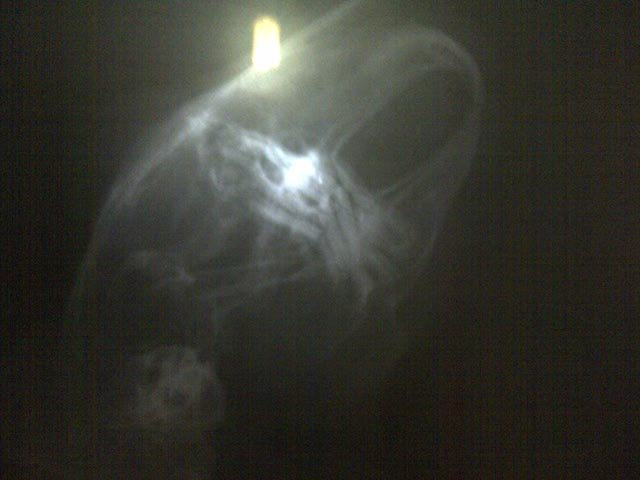 inquiry..my bunny keeps drolling n grinding his teeth
Question
dental xray xray
Dear Jana,
Hai..
inquiry..my bunny keeps drolling n grinding his teeth
Question
dental xray xray
Dear Jana,
Hai..
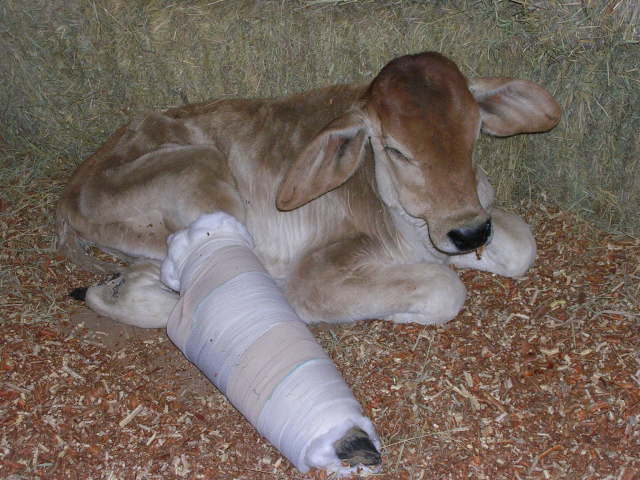 Calf with broken leg
Question
Finally home and taken
Dear Jana
Im hoping th
Calf with broken leg
Question
Finally home and taken
Dear Jana
Im hoping th
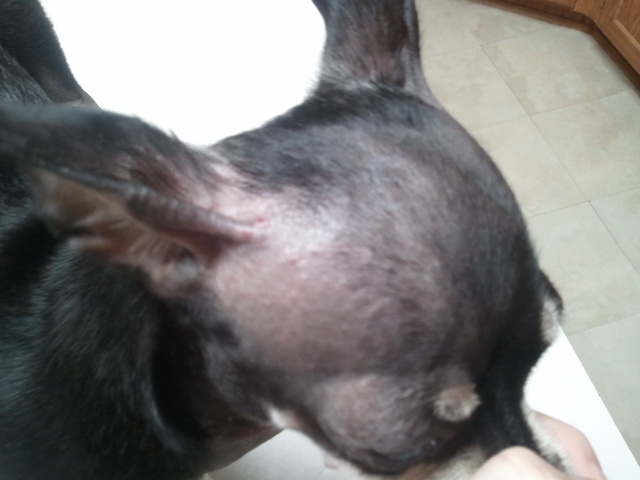 is it normal or is it mange?
Question
nemos skin
My 7 month old Chihuahua puppy, Nem
is it normal or is it mange?
Question
nemos skin
My 7 month old Chihuahua puppy, Nem
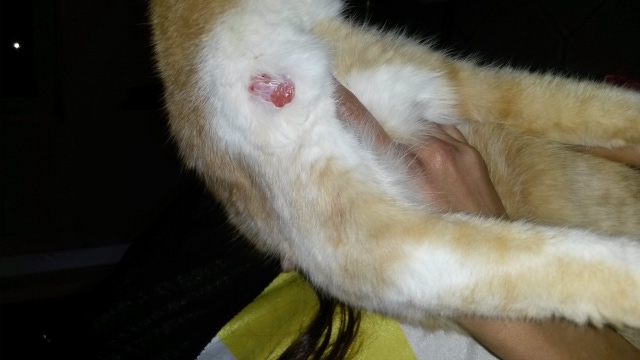 Cat with bump on neck/ shoulder
Question
Wound
Hi, I have a 20 year old female
Cat with bump on neck/ shoulder
Question
Wound
Hi, I have a 20 year old female
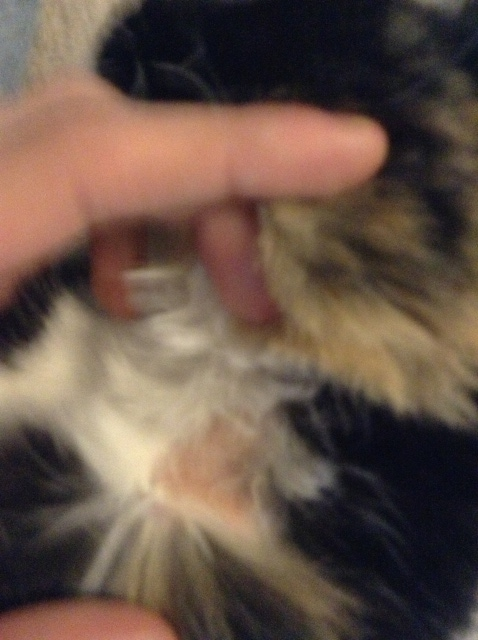 Cat Scabs and Hair Loss
Question
Scab Scab Again
My family just ad
Cat Scabs and Hair Loss
Question
Scab Scab Again
My family just ad